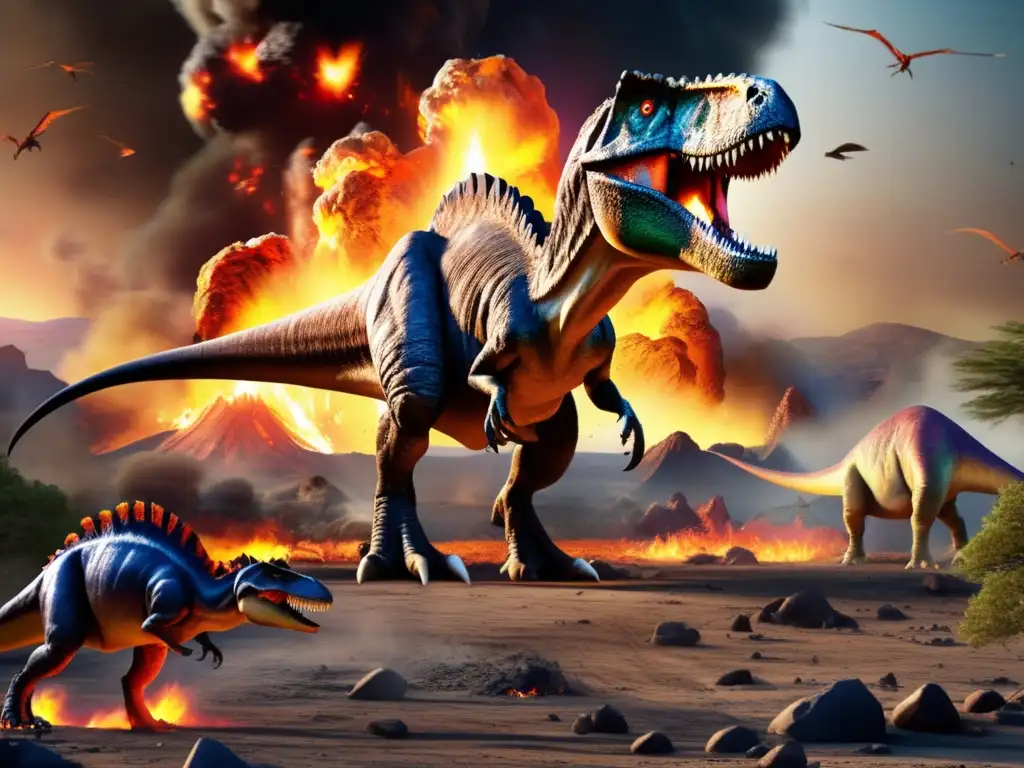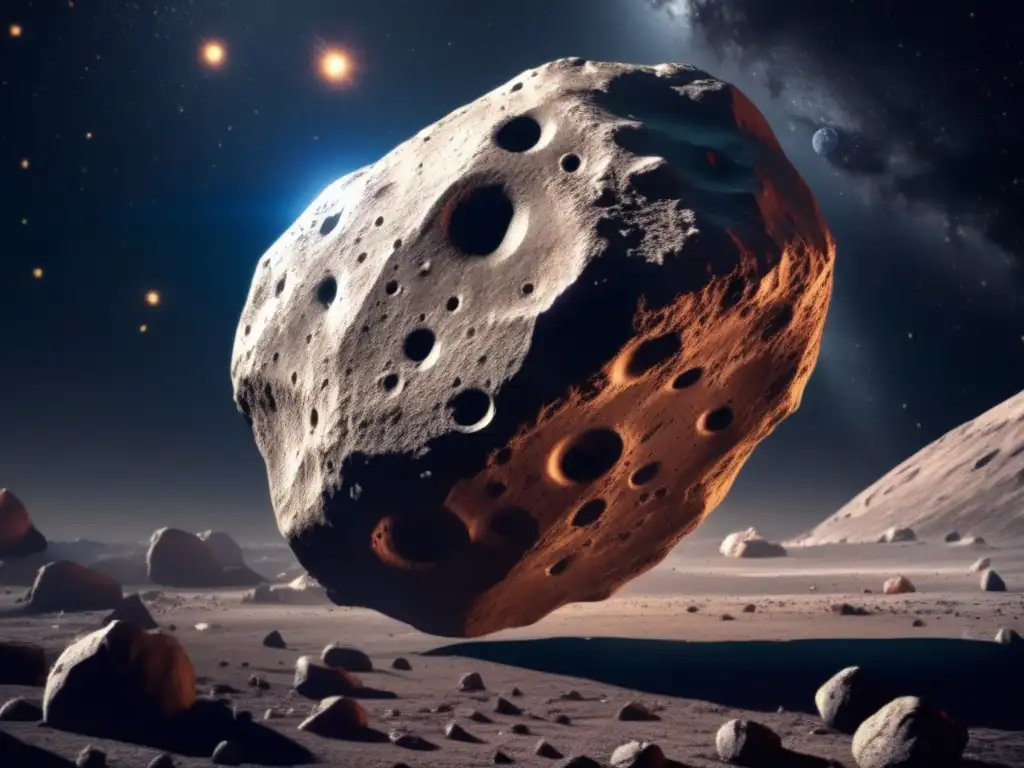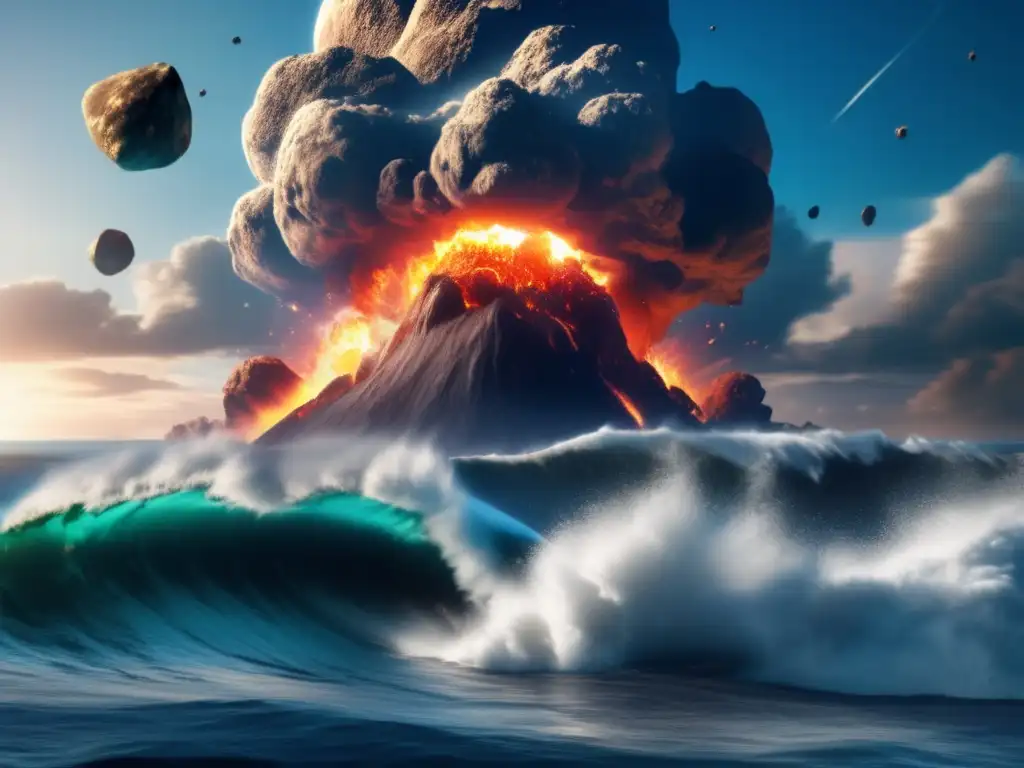The Asteroid Impact: The Catastrophe That Wiped Out Dinosaurs

Introduction
One of the most dramatic and fascinating asteroid topics is undoubtedly the asteroid impact that caused the extinction of the dinosaurs. This catastrophic event occurred almost 66 million years ago and is considered to be one of the most significant mass extinctions in the history of our planet. In this article, we will delve into the details of this devastating event, exploring the causes, effects, and aftermaths of this event.
The Impact

The Asteroid and Its Characteristics
The asteroid that caused the dinosaur extinction was a sizable space rock, measuring around 10 to 15 kilometers in diameter. The rock was traveling at a speed of approximately 20 kilometers per second when it collided with the Earth. The asteroid was composed of various materials, including iron and nickel, mixed with other minerals such as silicates and sulfides. The impact of the asteroid was so intense that it released an amount of energy equivalent to 100 teratons of TNT, a force more than a billion times greater than the atomic bomb dropped on Hiroshima.
The Collision
The collision of the asteroid with the Earth caused both immediate and long-term effects. The first impact area was the Yucatan Peninsula in Mexico, where a vast crater of about 200 kilometers in diameter called the Chicxulub Crater was formed. The initial collision immediately killed everything within a few miles of the point of impact. The heat from the impact started a massive fireball, which then triggered widespread forest fires, as well as a massive tsunami that swept across the sea. The dust and debris from the impact were thrown up into the atmosphere and created a long-lasting cloud of darkness that blocked out the sun's rays for several years, causing a global winter that lasted for years.
The Aftermath
After the initial impact, the Earth's climate was dramatically affected. The massive dust cloud caused by the impact led to a decrease in temperature, which triggered the extinction of many species, including the dinosaurs. The darkness prevented photosynthesis, which is necessary for plant growth, and consequently, most of the plant species on the planet died out as well. The combination of these factors led to the extinction of approximately 75% of all life on Earth.
The Current State of Research

Detecting Potential Asteroid Impacts
Since the asteroid impact that wiped out the dinosaurs, scientists have been working hard to detect and prevent potential asteroid impacts. Various measures have been implemented to monitor asteroids' movements, including the creation of specialized telescopes and sending spacecraft to investigate near-Earth asteroids. This ongoing research has enabled scientists to develop techniques for identifying and tracking potentially dangerous asteroids with the aim of preventing catastrophic collisions with our planet.
Preparing for Future Impacts
In addition to detection techniques, there has also been significant progress in developing strategies for dealing with potential asteroid impacts. One notable example is the development of asteroid deflection techniques, such as using laser ablation or kinetic energy deflectors, to divert an incoming asteroid's trajectory. Furthermore, there have been initiatives to design plans for disaster response and recovery in the event of an asteroid impact.
Frequently Asked Questions

-
How do we know that an asteroid impact caused the extinction of the dinosaurs?
Scientists have found evidence in the rock layers of the Earth's crust. The rock layers that correspond to the time when the asteroid hit contain high levels of iridium, which is rare on Earth, but abundant in asteroids.
-
What other species were affected by the asteroid impact besides the dinosaurs?
Many species were affected, including plants, marine animals, and land animals. Approximately 75% of all species went extinct during the event.
-
What measures are being taken to prevent future asteroid impacts?
Measures include developing specialized telescopes to monitor asteroid movements, sending spacecrafts to investigate near-Earth asteroids, and implementing asteroid-deflection techniques.
-
What can we do as individuals to prepare for a potential asteroid impact?
While it is unlikely that an individual could prepare specifically for an asteroid impact, general disaster preparedness plans, such as having emergency supplies at hand, can be effective in the event of any disaster.
-
Are there any other known mass extinctions caused by asteroid impacts?
Yes, there have been several other mass extinctions caused by asteroid impacts in the past, but none have been as severe as the one that wiped out the dinosaurs.
Conclusion
The asteroid impact that caused the extinction of the dinosaurs was a catastrophic event that forever changed our planet. Despite the devastation it caused, however, it also spurred scientific research and progress toward detecting and preventing future asteroid impacts. By continuing to learn about asteroids and their potential impact, we can ensure that our planet remains safe and habitable for many years to come.
Thank you for reading this article, and please feel free to share your thoughts and opinions in the comments section below. Don't forget to subscribe and share this article with your friends and family!
Additional Resources

For further reading on asteroid impacts, we recommend checking out the following resources:
 Cosmic Endgame: How Asteroids Ended The Age Of Dinosaurs
Cosmic Endgame: How Asteroids Ended The Age Of Dinosaurs Asteroids: The Cosmic Juggernaut That Ended The Dinosaurs
Asteroids: The Cosmic Juggernaut That Ended The Dinosaurs A Journey Into The Extinct: Asteroids And Dinosaurs
A Journey Into The Extinct: Asteroids And DinosaursIf you want to discover more articles similar to The Asteroid Impact: The Catastrophe That Wiped Out Dinosaurs, you can visit the Asteroids and Dinosaurs category.
Leave a Reply

Articulos relacionados: